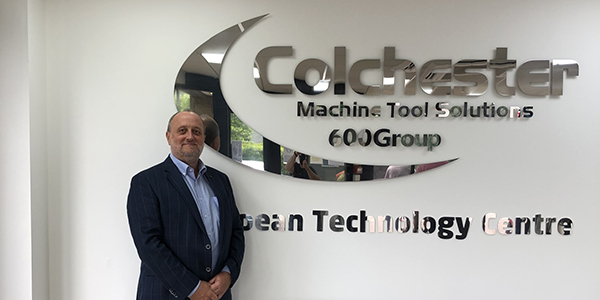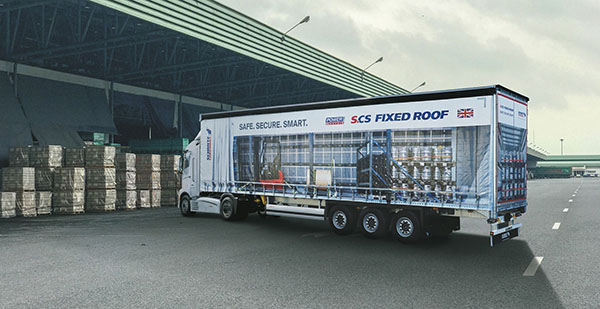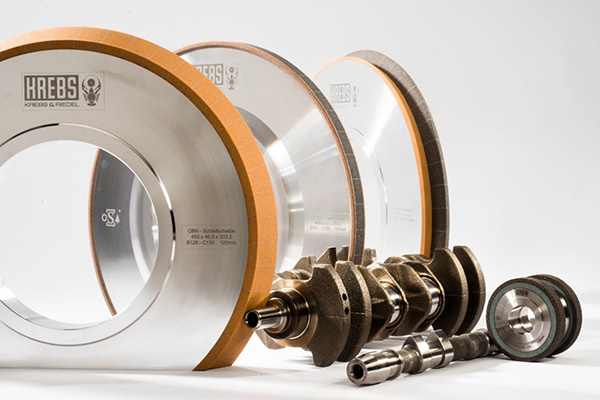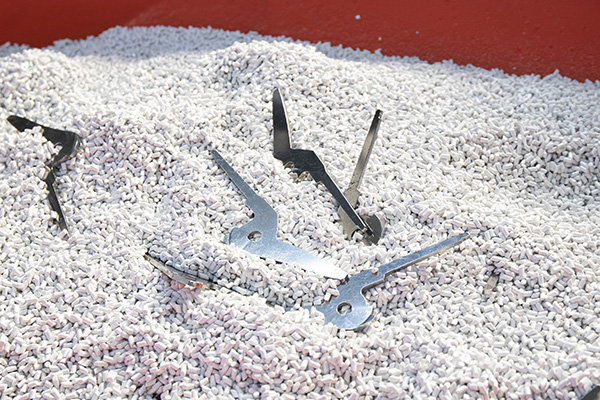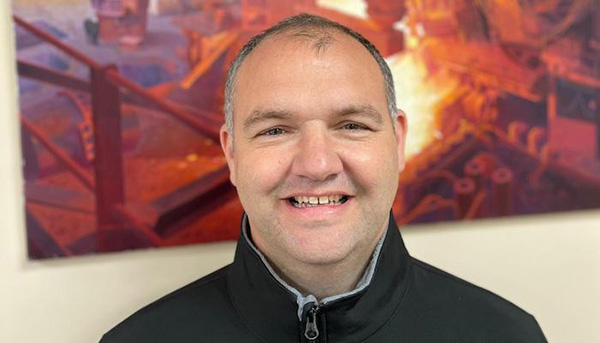
Improved productivity, increased manufacturing capacity, better quality and lower costs. These were the demands of a leading garden tool manufacturer, Gardena, when it invested in a new mass finishing system for the deburring and polishing of garden shear blades. Rösler met this challenge with a bespoke Keramo-Finish process that runs in a double batch centrifugal disk finishing machine (FKS 35.1 A2-So) featuring fully automatic workpiece handling.
In a two-stage process, the stamped and laser-cut blades are deburred and polished in the FKS finishing machine. Subsequently, the machine dries the blades in an energy-efficient rotary dryer in preparation for the next manufacturing step.
Previously, the lower blades required two separate finishing operations, one in a rotary vibrator and one in a centrifugal disk finishing machine. To combine these two operations into one and adapt them to the latest manufacturing requirements, Gardena replaced its existing mass finishing equipment. The company chose a finishing solution from Rösler, which supplied the previous solution many years ago.
Based on the surface finish of the steel blades that is required for the next manufacturing steps, process engineers ran a series of processing trials in the Rösler test lab with various processing media and different parameters. The best results came from a Keramo-Finish process in a centrifugal disk finishing machine. This process includes the use of a ceramic media with minimal abrasive characteristics in combination with a grinding and polishing paste and a cleaning compound that offers a distinct brightening effect.
The new process allows the deburring and polishing of all blades in a single machine. Moreover, depending on the workpiece, the Keramo-Finish process reduces processing times by 25% and allows bigger workpiece batches. This has reduced operational costs by around 10%, with greatly improved finishing results.
For further information
www.rosler.com







